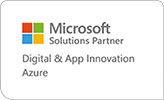
Cyber Tides Are Hitting Ireland Hardest
Cyber security continues to be a huge talking point and judging by recent research, this is for good reason. A report by PwC found that cyber-crime in Ireland is double the global average, with the number of incidences increasing from 44% to 61% since 2016.
66% of Irish companies are expecting more cyber attacks in the future.
This 2016 figure is nearly double the 31% average experienced globally. Irish companies are simply not at the races cyber security and companies are becoming increasingly vulnerable to attacks. 66% of Irish companies are expecting more cyber attacks in the future. This fearful outlook appears to be warranted, as research by Carbon Black showed that cyber criminals are outspending organisations by 1000%.
There are many contributing factors to this sharp rise, including an ever-enlarging threat landscape. As cyber attacks become more complex, it has never been more important to ensure your network is protected. However, a core issue for many organisations is a lack of awareness on the tactics used by modern day cyber criminals.
In this piece, we break down the most common types of cyber-attacks and practical steps you can take to protect against them.
Closing the gaps
While cyber-attacks have become more complex in nature, the goal of cyber criminals remains the same – accessing private, sensitive information. This can be done in a number of ways, with the following three proving to be some of the most utilised tactics as cyber criminals try to capitalise on gaps in your cyber security policy.
Brute-Force Attacks
Brute-Force attacks are attacks against a public interface. In simple terms, if an interface requires a username and password it can be hacked. Using automated software, various combinations of usernames and passwords are generated until the interface is breached. Dictionary attacks (using a combination of every word in the dictionary) are a common brute-force tactic used. Legacy services, which may or may not be known of, are particularly vulnerable to brute-force attacks. Services could have been left open by an administrator or could simply be no longer in use. This type of exposure is a common
The good news for organisations is that this type of cyber threat can be prevented by implementing several security tools. Multi-Factor authentication is an extra layer of security that requires not only a username and password but also something that would be unique to the user. The additional authentication prevents brute-force attacks at the source. Strong password policies (regular password changes and strong password requirements) and regular penetration testing (finding vulnerabilities that a hacker could exploit) are further tactics that can be used in the defence against brute-force attacks.
Phishing
While Multi-Factor Authentication prevents brute-force attacks, hackers then turn to more creative means to gain access to a network. Phishing is a prominent technique used by cyber criminals. Phishing involves hackers posing as a legitimate entity or person and targeting individuals through email, phone, etc. to lure sensitive data such as personally identifiable information, banking/credit card details, and passwords. In the PwC research outlined above, phishing (66%) was the most common form of cyber attack used.
Protecting against phishing attacks focuses on educating the end user. Phishing education is a continuous process, and targeted phishing campaigns are an important cyber defence strategy. Microsoft 365 carries out targeted phishing campaigns, posing as a trusted source to gain information and repeats this process at different intervals. These campaigns are an effective way for companies to identify their vulnerability to a phishing attack and if training is required. In our next cyber security post, we will examine in more detail the role of user education in your cyber security policy.
Ransomware
Ransomware is a malicious tactic deployed by cyber-criminals to target weak points in a network. As the availability and ease of access to ransomware tools on the dark web increases, the costs associated with this type of attack are constantly rising. Ransomware costs have jumped from $235 million in 2016 to $5 billion in 2018, a growth of nearly 1500%.
Ransomware costs have jumped from $235 million in 2016 to $5 billion in 2018
Reiterating the point above, this spike in costs shows no sigh of abating, with cyber criminals spending 10 times more on hacking tools than organisations are on cyber protection. Protecting against cyber threats is becoming more and more complex as hacking tools evolve, and requires a multi-pronged approach.
One such tool is Sophos Sandstorm, which uses next-generation, cloud technology to give your organization an extra layer of security against ransomware and targeted attacks. Sandstorm provides targeted attack protection, visibility and analysis by detecting, blocking and responding to evasive unknown threats. This allows organisations to keep ransomware and unknown data-stealing malware off their network. Another important tool is Intercept X, a comprehensive defence-in-depth approach to endpoint protection. Intercept X comes into play when an attack gets through a firewall to the end user, stopping encryption after the program has started. Other tools, such as next generation firewalls, are important in the defence against malicious attacks.
A Multi-Pronged Approach
The increasing complexity of cyber attacks and the evolving threat landscape can leave businesses feeling overwhelmed in their defence against cyber threats. Implementing the tactics outlined above, such as multi-factor authentication, phishing campaigns and ransomware protection won’t make your company Fort Knox but will at least get you started.
ActionPoint’s IT security offering deploys a multi-pronged approach. Our security services include an initial security assessment, IT security architecture design, endpoint protection and data backup and recovery. However, a security policy is only as strong as its weakest link – people. End-users, staff and even management are the most vulnerable layers of your cyber security defence and mitigating this requires an investment in user education. In part two of our security series, we highlight steps you can take to address this weak link by creating a more informed, aware and educated user.











